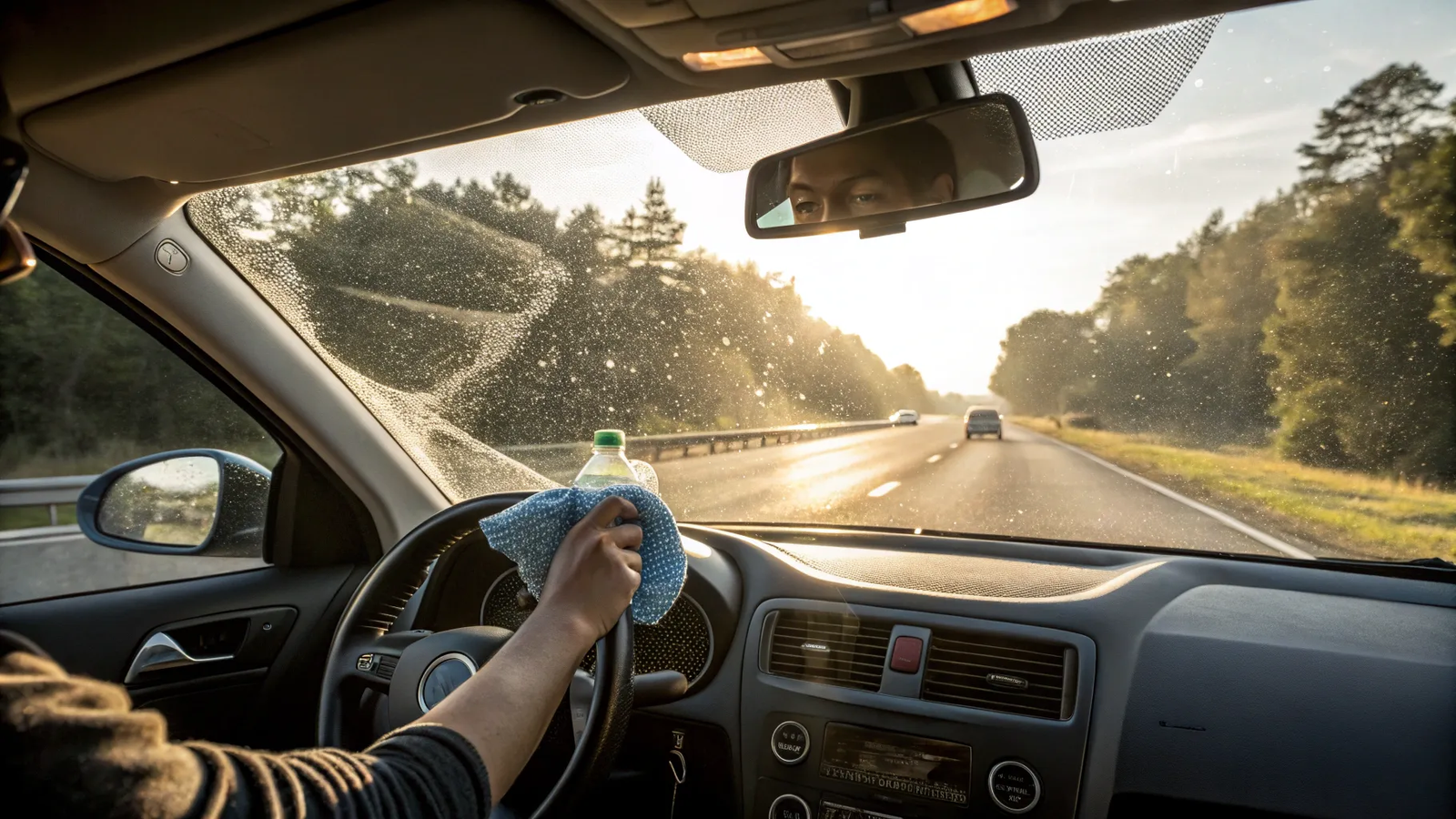Want a crystal-clear, streak-free windshield—without harsh chemicals? This step-by-step guide shows you exactly how to clean the inside of your windshield, remove that greasy off-gassing film, and improve night visibility in about two minutes. We use a simple Dawn dish soap solution, a microfiber wand, and a waffle-weave towel—safe for tinted glass and proven to cut haze fast. Jump to the tools below or shop the essentials on Amazon.
If your windshield’s inside has that stubborn greasy film that ruins visibility, here’s my fastest, simplest method to get a crystal-clear view in about two minutes. Below I walk you through the tools, the step-by-step process I use, and troubleshooting tips so you can drive safer and see better.
Why a clean windshield matters 🚗
“Having a clean windshield is not just about aesthetics. It’s crucial for safe driving.”

That greasy film you see on the inside of your windshield usually comes from plastics in your car off-gassing. It builds up over time and creates glare and haze, especially at night or in low sun—exactly when you need perfect visibility. A quick, proper clean eliminates the haze and reduces driving risk.
What you’ll need 🧰
- Two microfiber towels (one waffle-weave microfiber towel is essential). Recommended:
Check Amazon
- Dawn dishwashing detergent (just a squirt). Recommended:
Check Amazon
- Small bucket
- Small all-plastic squeegee (super flexible is best).
Check Amazon
- A large old towel to protect the dash.
Check Amazon
- Microfiber wand or reach tool to access edges and near the dashboard.
Check Amazon
- Invisible Glass Reach Tool with Longer handle
Check Amazon
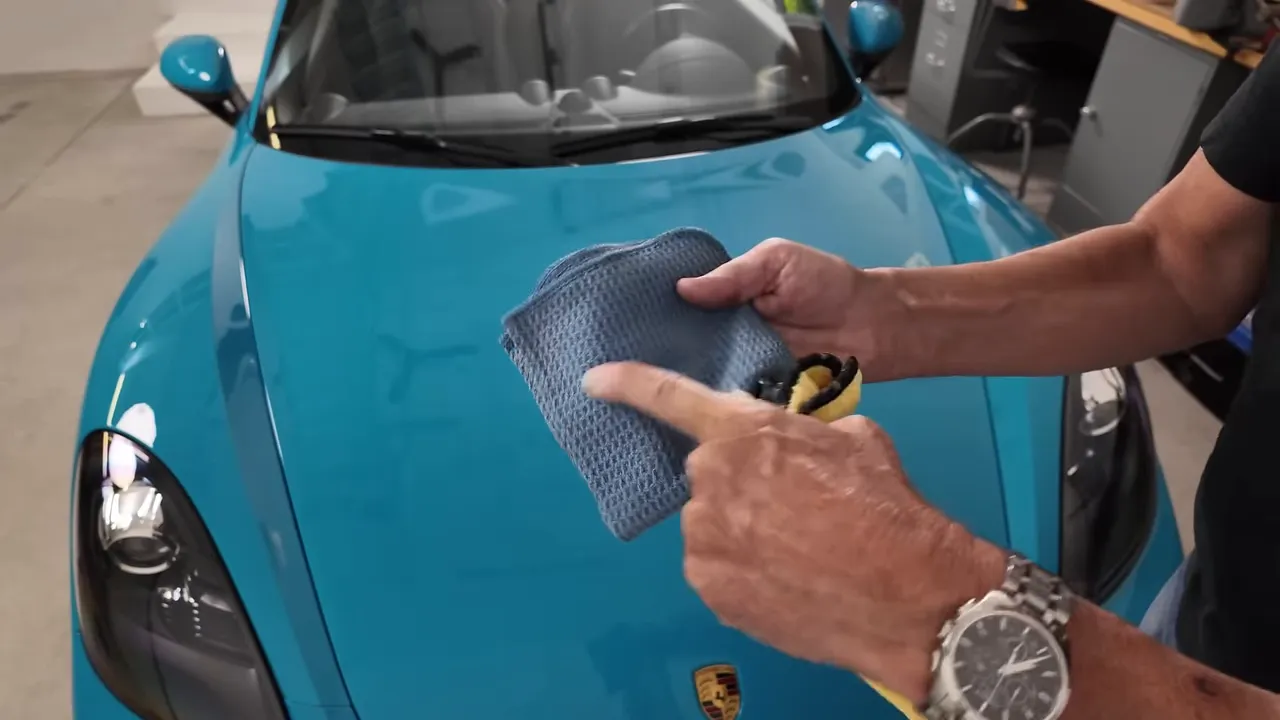
Pro tip: This isn’t sponsored—these are the tools I use. And yes, you might want to check with your spouse before grabbing that “old towel.”
Step-by-step: Clean the inside windshield in about 120 seconds ⏱️
- Pick the right time and prep: Work on a cloudy day or in a garage to avoid quick drying and streaks. Always clean the outside of the windshield first using the same method—it’s easier and prevents bringing outside grime inside.
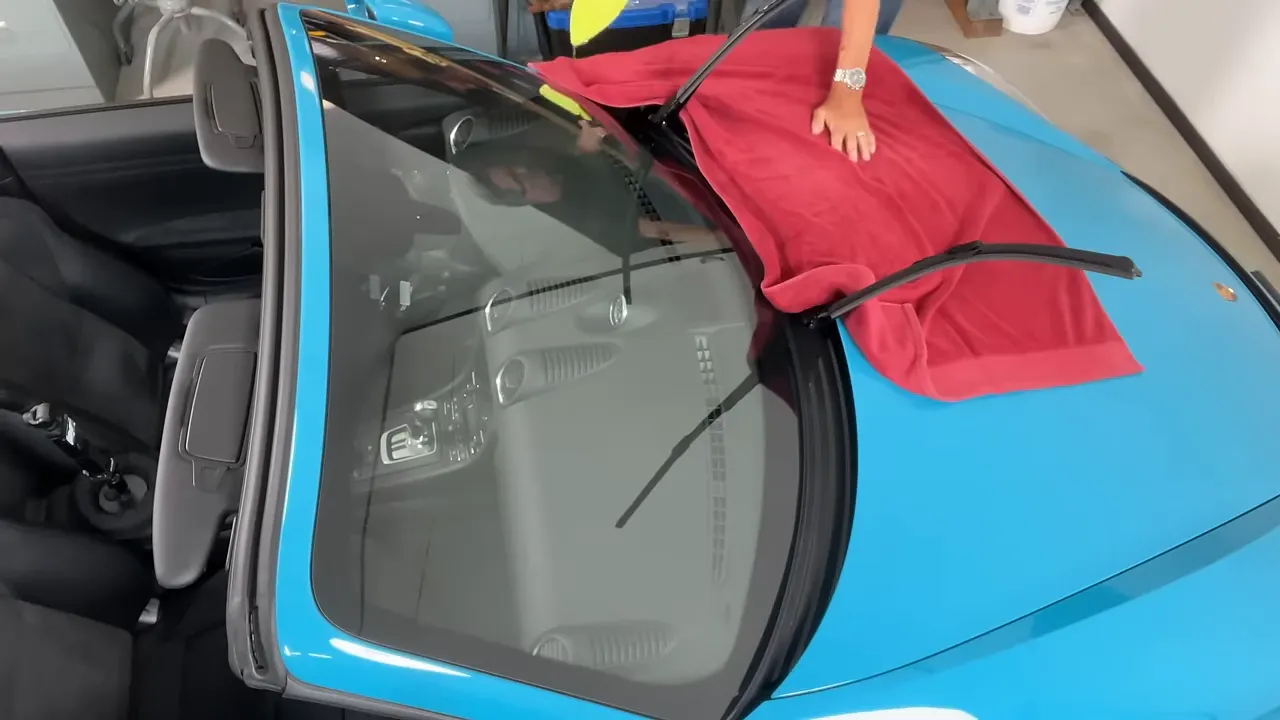
- Mix a mild cleaning solution: Fill about a half-gallon of warm water in the bucket and add one squirt of Dawn. Swirl with your finger to mix—don’t create lots of suds.
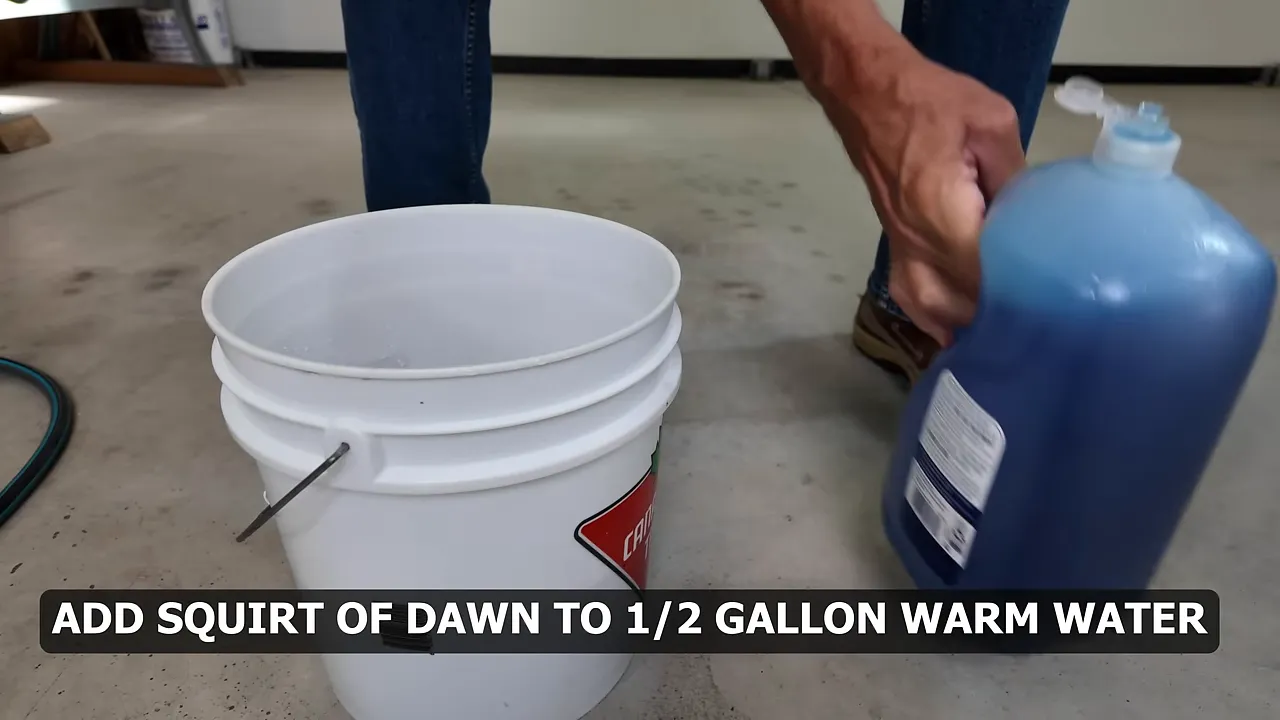
- Protect the dash: Lay the large towel over the dashboard so soapy drips won’t damage or stain it.
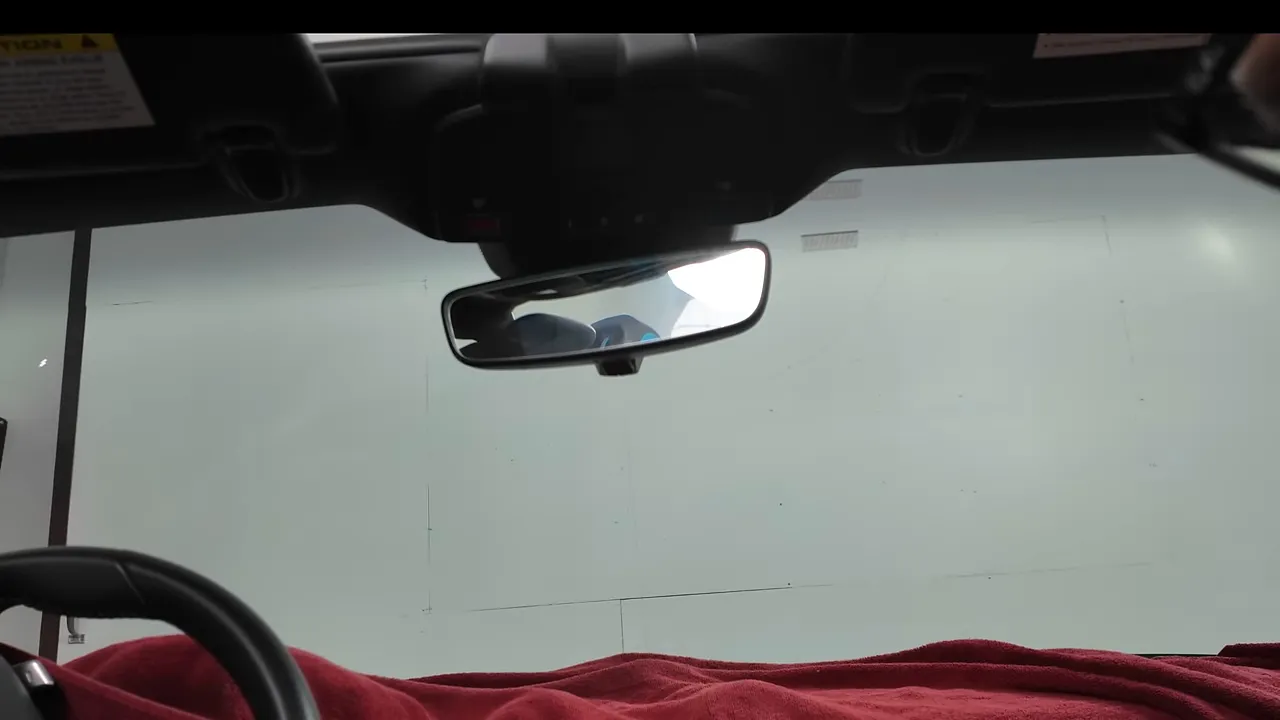
- Use the wand to loosen grime: Dip the microfiber wand into the soapy water and shake it out so it’s damp but not dripping. Run it across the inside glass—back and forth and up and down—focusing on one half of the windshield at a time. I always start on the passenger side.
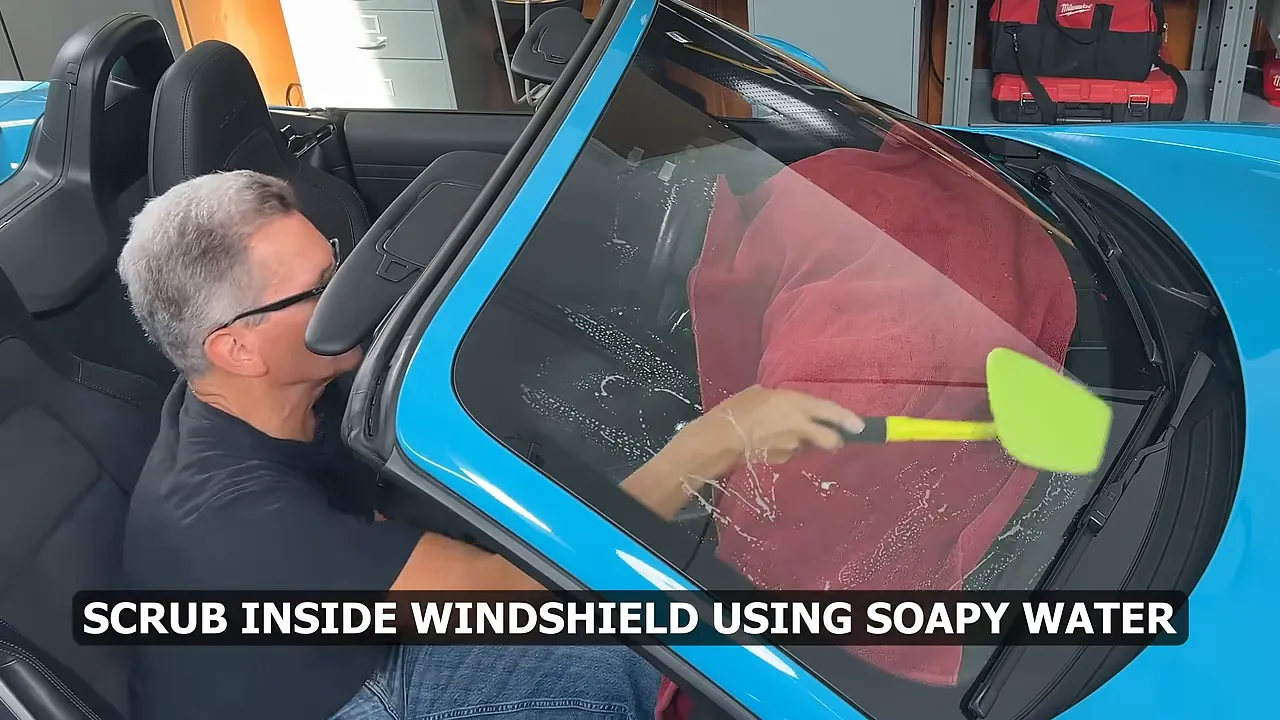
- Squeegee and wipe: After loosening the film, grab your squeegee and the non-waffle microfiber towel to squeegee the soapy water away. Work from top to bottom; as you get to the end, wipe the squeegee clean and continue.
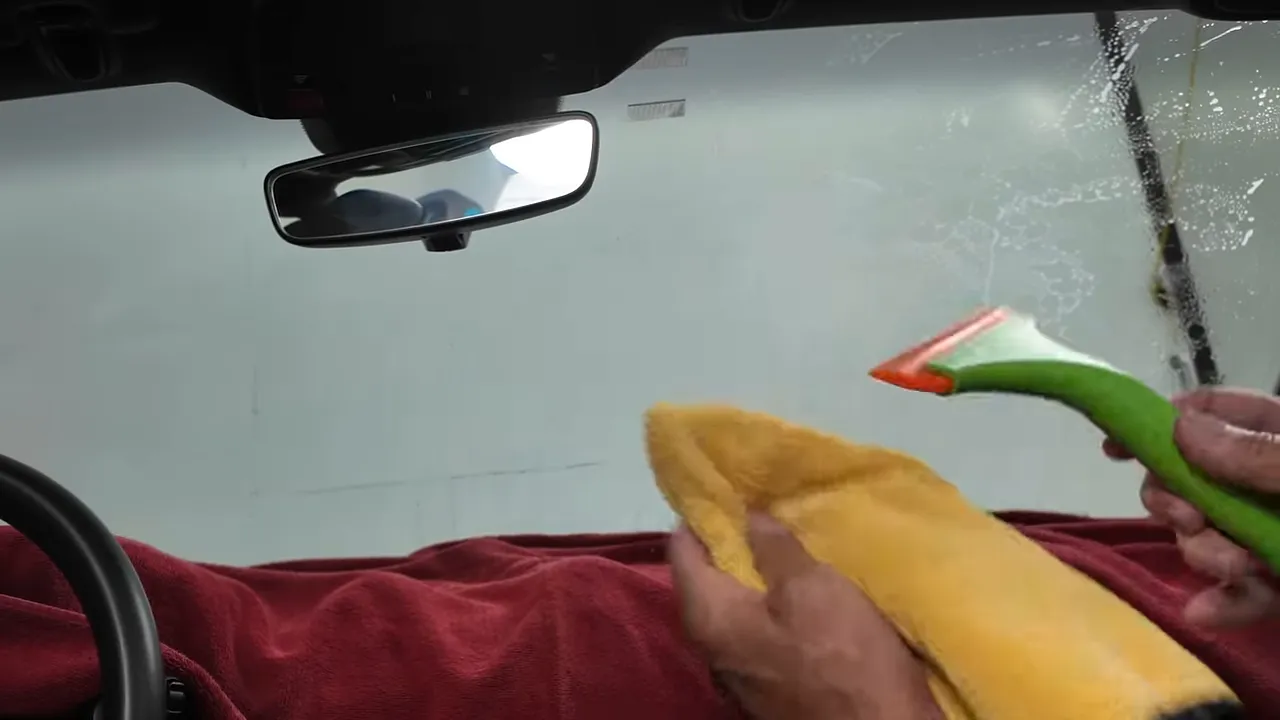
- Detail the edges with the waffle weave towel: If you can’t reach the edges or the bottom, fold the waffle-weave microfiber towel in half and use the backside with finger pressure to get into corners and around the mirror. That towel grabs residual soap and leaves an edge-to-edge clean.
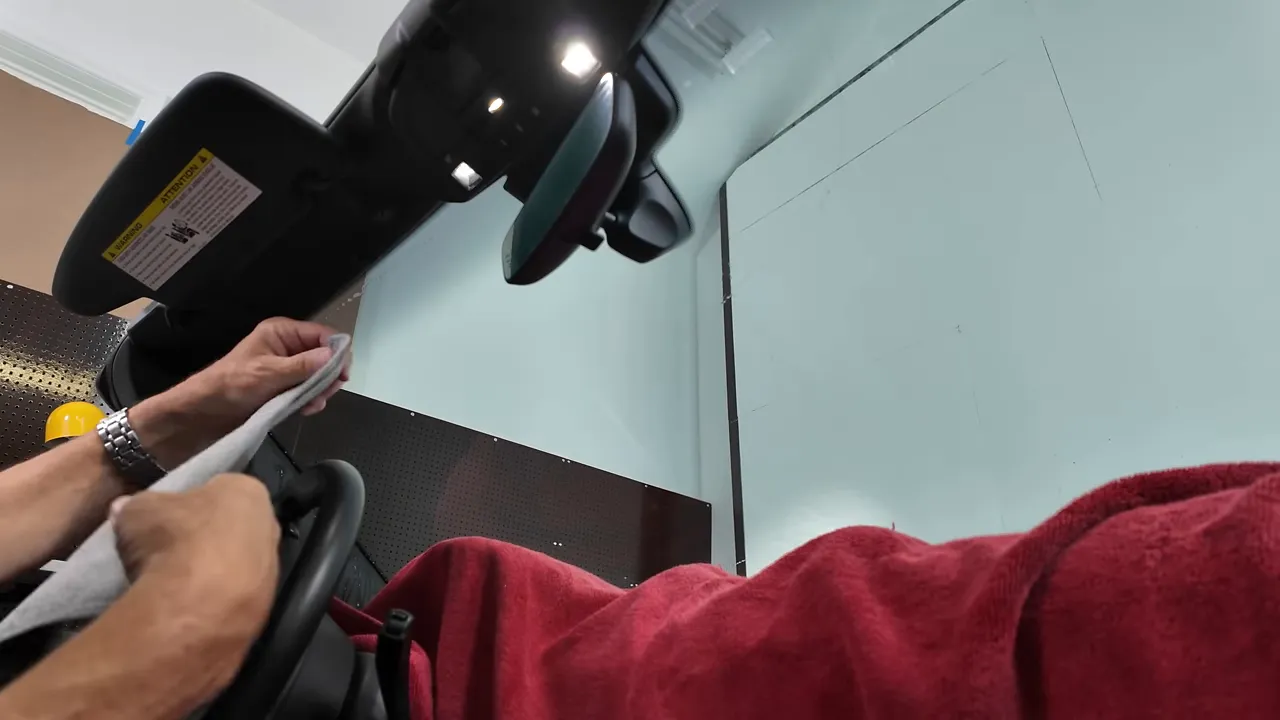
- Final check: Inspect from the driver’s seat with the sun or an angle light—if you still see haze, repeat the wand and squeegee pass on that trouble area.
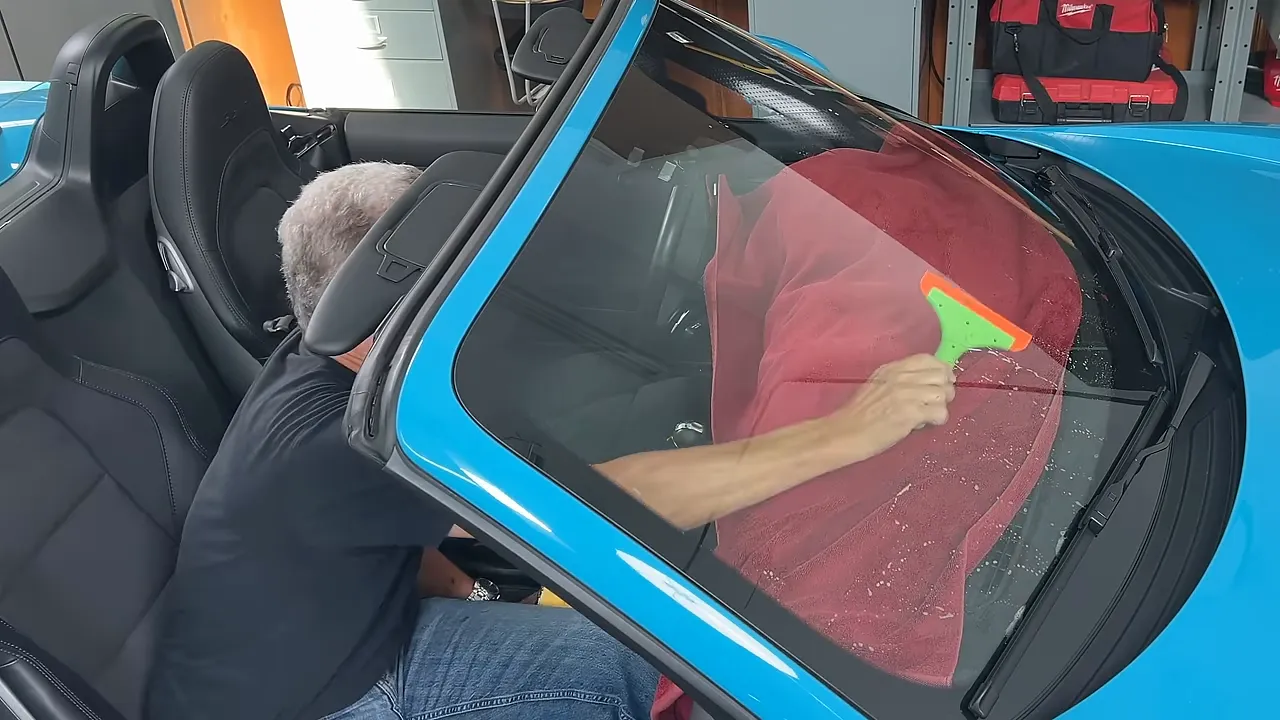
Troubleshooting & pro tips 🛠️
- Don’t over-suds: lots of foam makes the job messier and harder to remove cleanly.
- Keep the wand damp, not dripping. Excess water can run onto the dash or into vents.
- Squeegee technique matters: use smooth, overlapping strokes and wipe the blade frequently to avoid streaks.
- If you have tinted windows or are worried about chemicals, avoid ammonia-based cleaners—stick with the Dawn method or a glass cleaner labeled safe for tint.
- For really stubborn film, repeat the process or use a dedicated automotive glass cleaner designed for interior glass.
- Always do one half of the windshield at a time—it’s faster and keeps you from spreading dirty water across the whole glass.
“That greasy film on the inside of your windshield comes from all of the plastics in your car interior off gassing.”
FAQ ❓
How often should I clean the inside of my windshield?
Every few months is a good rule of thumb, or whenever you notice glare or haze. If you smoke in the car or carry lots of new plastics, check more frequently.
Can I use any dish soap?
I recommend Dawn (a squirt in a half-gallon of warm water). It’s mild, cuts film well, and rinses without leaving residues. Use just a little—too much soap creates suds and streaks.
Do I really need a waffle-weave towel?
Yes—one towel should be waffle weave. It holds more moisture and scrubs edges without leaving lint. The other towel should be a regular microfiber for squeegeeing and drying.
Will this damage my dash or electronics?
Not if you protect the dash with a towel and avoid drips. Keep the wand damp (not dripping) and work carefully near vents and mirror mounts.
What about rear windows and larger vehicles?
Same process—work in sections, use a reach tool for large or steeply sloped windows, and protect nearby trim with towels.
Final thoughts ✅
Cleaning the inside of your windshield doesn’t have to be brutal. With two microfiber towels (one waffle weave), a microfiber wand, a plastic squeegee, a half-gallon of warm water, and a squirt of Dawn, you can remove interior film quickly and safely. Try it on a cloudy day or in the garage, work half the windshield at a time, and you’ll be amazed how much clearer your driving becomes.
